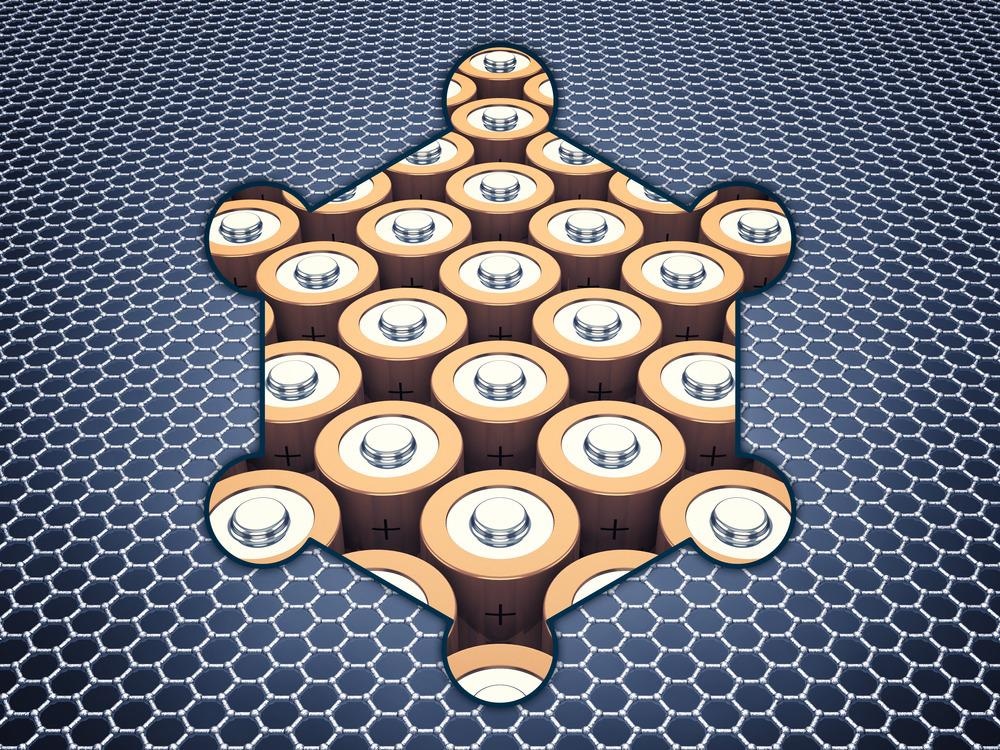In an article recently published in the ACS Applied Materials & Interfaces journal, a single-step phosphorization method was used to create low-crystallinity Fe2P2O7 nanoplates that were chemically attached to graphene nanotubes doped with nitrogen and phosphorous for supercapacitor applications.

Study: Interfacial Engineering and a Low-Crystalline Strategy for High-Performance Supercapacitor Negative Electrodes: Fe2P2O7 Nanoplates Anchored on N/P Co-doped Graphene Nanotubes. Image Credit: nobeastsofierce/Shutterstock.com
The Problem of Subpar Electrodes for Supercapacitors
Supercapacitors (SCs), a unique family of electrochemical gadgets, play a vital role in energy storage devices due to their high power densities, long cycle lifetime, and fast charging/discharging processes. Unfortunately, the energy densities of SCs are much less than those of recharging batteries.
Electrode components are regarded as the most important aspect in improving electrochemical activity. The absence of appropriate electrodes severely impedes the industrialization of SCs. Carbon-based materials have traditionally been the most often used electrodes, resulting in a low specific capacitance.
Transition metal compound (TMC) electrode substances with good capacitance, in theory, are offered as possible options in this research. Because of their global availability, low price, large theorized specific capacitance, and substantial potential for hydrogen evolution, previously documented TMC electrodes have tremendous promise for supercapacitors.
However, their observed specific capacitance is lower, and they have inadequate cycle stability and rate capacity due to their innate low electric conductance and facile aggregation in substrates.
To overcome the issue, one viable strategy is to employ various conducting carbonaceous materials or synthetic semiconductors as skeletons to equally develop the TMCs with the purpose of generating integrated composite nanoarchitectures.
Using Graphene Nanotube Skeletons
Graphene nanotubes (GNTs) have lately received a lot of interest as a new kind of carbon-based substance due to their unique hollow interior pathways, superior electric conductance, remarkable physiochemical durability, and anticorrosive capabilities.
Furthermore, these GNTs may interweave with one another to form distinct 3D conducting networks, resulting in a homogenous dispersion of TMC active materials. The large-diameter hollow aspect of the GNTs allows them to function as an effective ionic repository, ensuring a constant feed of hydroxide ions and shrinking the available diffusion channel.
Moreover, heterogeneous atomic doping with nitrogen and phosphorous having varying electronegativity can successfully regulate the electrical properties on the surface of the GNT skeletons, which can conveniently stimulate the formation of strong chemical bonding between TMCs and the skeletons and generate in-built electrical fields at their junctions, resulting in improved interface electrical transportation and rate property.
More importantly, the specific architectural benefits such as reducing structural strain and avoiding the visible volumetric growth and shrinkage with increased cycles result in long-term durability.
Role of Fe2P2O7
Due to the multivalent states of elemental iron and phosphorous in elemental form, iron-based phosphides (Fe2P2O7) are developing interesting TMC electrodes that may increase charge storing via reversible faradaic redox processes.
They also have metalloid-like electric conductance, resulting in a higher charge transfer rate than oxides.
Meanwhile, due to increased grain limits, active areas, and ionic diffusive channels, low crystallinity Fe2P2O7 compounds are projected to have higher specific capacitance than equivalent crystal structures. It is projected that low-crystallinity Fe2P2O7 compounds anchored on N/P-codoped GNTs through chemical bonds would have high specific capacitance, excellent rate property, and long-term cycle stability.
Key Findings of the Study
In conclusion, the team proposed heteroatomic doping-generated interface bonding engineering and a low-crystalline technique for first synthesizing N/P-GNTs@b-Fe2P2O7 hybrid negative electrode materials via a one-step phosphorization process.
The structural integrity of N/P-GNTs and FeP nanoplates is considerably increased by the N/Ni/Co and P/Ni/Co chemical bonds that exist at the interface between N/P-GNTs and FeP nanoplates, and their electron transfer rate is also greatly boosted, enabling rate capability. Furthermore, the produced low-crystalline Fe2P2O7 has multiple flaws and a high degree of structural disorder, which might result in more active sites for redox reactions and a high specific capacity.
A great reversible specific capacity and an extraordinary rate performance are attained as a result of the unique structural qualities.
The ultralong cycle stability achieved is impressive. As a result, this study provides a universal technique for using hybrid SC electrodes with ultralong cycle life and good rate and specific capacity, as well as pointing the way forward for commercial applications of additional TMCs in innovative energy storage systems.
Continue reading: What Does the Future Look Like for Graphene Supercapacitors?
Reference
Li, H., Liu, T. et al. (2022). Interfacial Engineering and a Low-Crystalline Strategy for High-Performance Supercapacitor Negative Electrodes: Fe2P2O7 Nanoplates Anchored on N/P Co-doped Graphene Nanotubes. ACS Applied Materials & Interfaces. Available at: https://pubs.acs.org/doi/10.1021/acsami.1c17356
Disclaimer: The views expressed here are those of the author expressed in their private capacity and do not necessarily represent the views of AZoM.com Limited T/A AZoNetwork the owner and operator of this website. This disclaimer forms part of the Terms and conditions of use of this website.